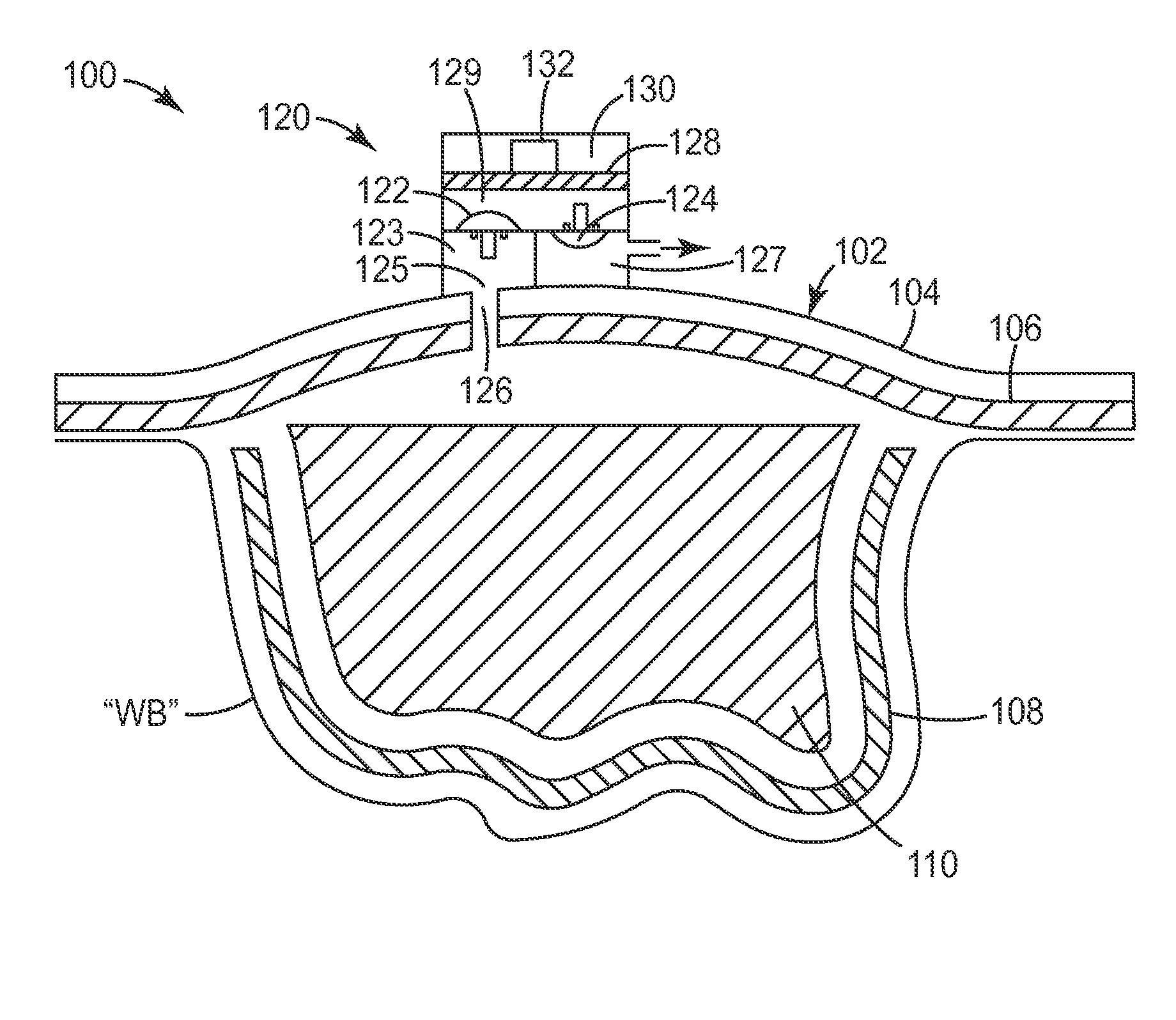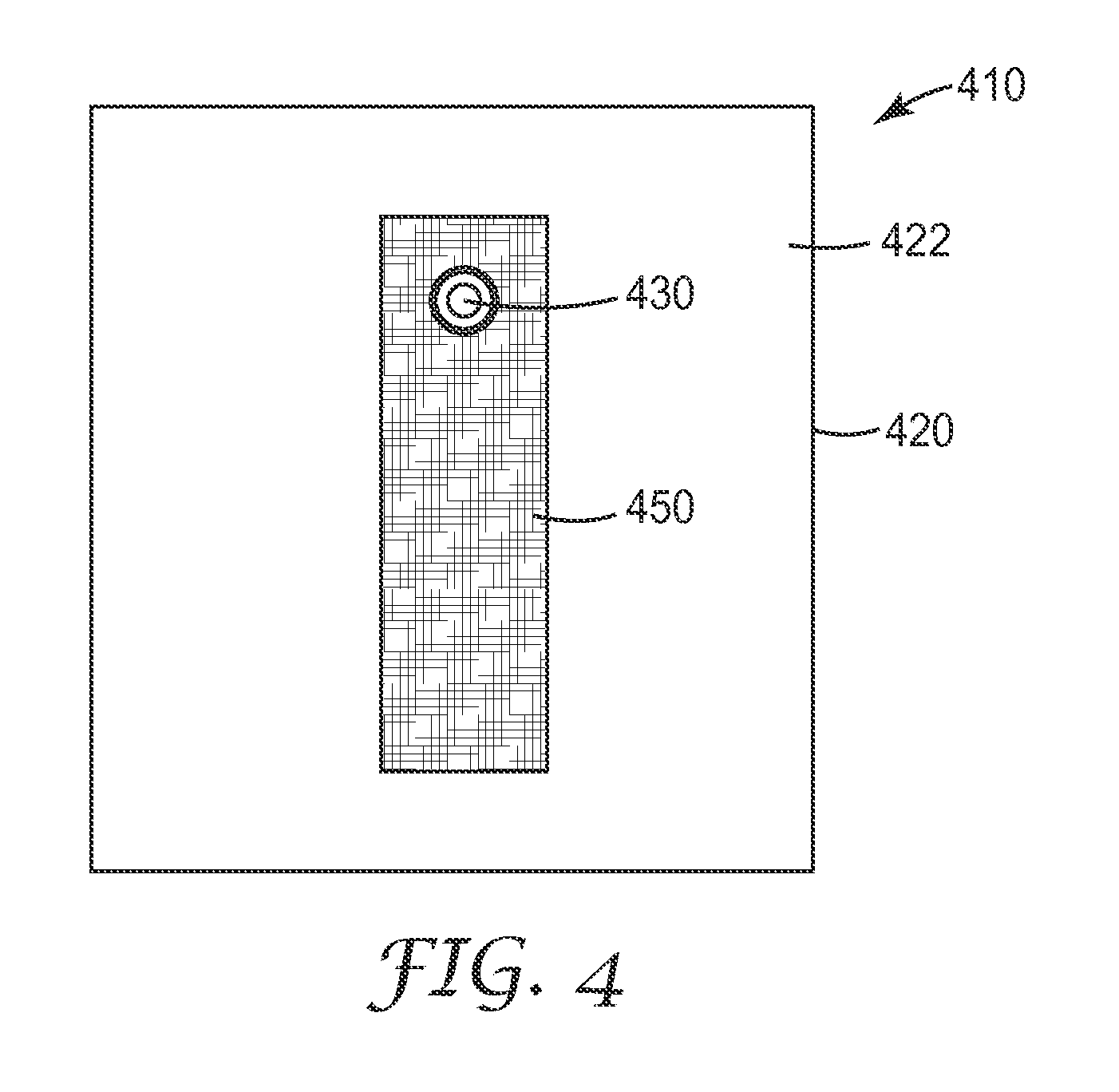Wound dressing with micropump
a micro-pump and wound dressing technology, applied in the field of wound dressings with micro-pumps, can solve the problems of less able to close naturally, less able to successfully close, difficult to close, etc., and achieve the effects of less complicated, convenient ambulation, and greater patient comfor
- Summary
- Abstract
- Description
- Claims
- Application Information
AI Technical Summary
Benefits of technology
Problems solved by technology
Method used
Image
Examples
example 1
[0178]FIG. 15 is a cross-sectional schematic diagram of this example. A Tegaderm™ (3M Company, Maplewood Minn.) wound dressing 102 is used to seal a wound cavity defined by the wound bed “WB” and the wound dressing. The wound cavity is filled with a wound packing 110. A diaphragm micropump is fixed to the exterior surface of the wound dressing backing The micropump extracts fluid (air and wound exudate) and moves this fluid through the exudate collection line to a to a flexible collection pouch 150. Although shown with a single micropump multiple micropumps may be used over a single wound site. The collection pouch is designed very similar to an ostomy bag and can be worn in a similar manner. The collection pouch may be sealed or vented. In a preferred embodiment it is not vented. If vented, it may include a vent filter to reduce order that may be generated from the wound fluid. A valve is placed in the exudate collection line 140 which may be used to collect samples of wound fluid ...
example 2
[0185]The wound dressing evacuation system of Example 1 is employed except that the micropump is supplied separately in a kit with the wound dressing. The kit comprises the micropump, wound dressing, wound packing material with an integral (bonded) wound contact layer, evacuation line and wound fluid exudate collection pouch. As in Example 1, the wound packing / contact layer is cut to size and placed in the wound. The dressing is placed over the entire wound making certain to seal well to the surrounding tissue and forming a hermetic seal. The micropump comprises a pressure sensitive adhesive on its base. The micropump is positioned over the preformed orifice in the dressing (126). In this embodiment the micropump may be reusable (but preferably only on a single patient) and applied to several dressings in succession as needed.
example 3
[0186]The wound dressing evacuation system of Example 2 is employed except that the dressing is not supplied with an orifice. Instead the orifice is created by the clinician using a supplied punch which may be similar in operation to a hand held paper hole punch. The orifice may be placed anywhere on the dressing the clinician prefers such as in the center or along the periphery. Multiple orifices and multiple micropumps are employed.
PUM
 Login to View More
Login to View More Abstract
Description
Claims
Application Information
 Login to View More
Login to View More - R&D
- Intellectual Property
- Life Sciences
- Materials
- Tech Scout
- Unparalleled Data Quality
- Higher Quality Content
- 60% Fewer Hallucinations
Browse by: Latest US Patents, China's latest patents, Technical Efficacy Thesaurus, Application Domain, Technology Topic, Popular Technical Reports.
© 2025 PatSnap. All rights reserved.Legal|Privacy policy|Modern Slavery Act Transparency Statement|Sitemap|About US| Contact US: help@patsnap.com



